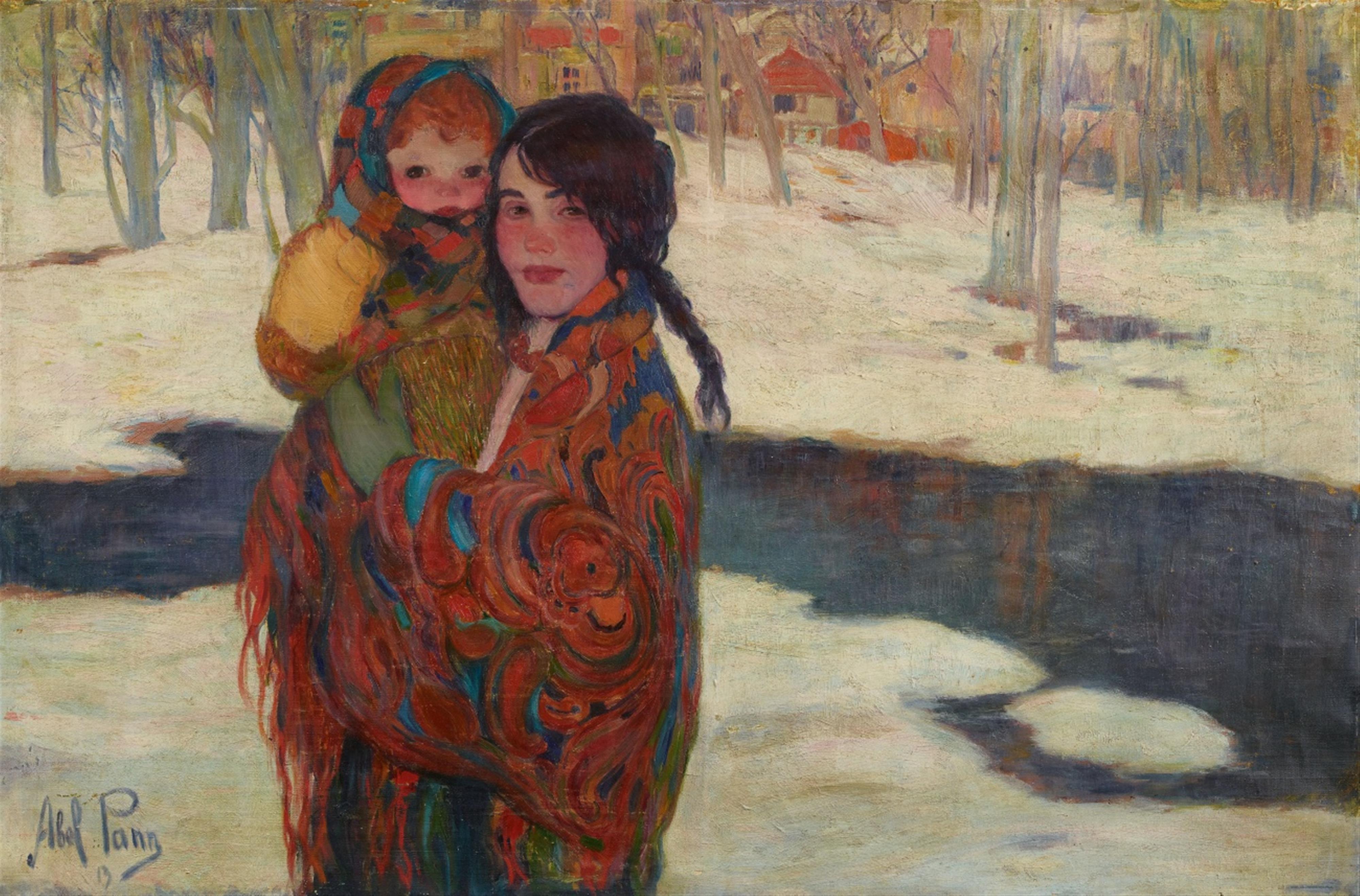Abel Pann (Abba Pfeffermann)
Geschwister in Winterlandschaft
1913
Oil on canvas 97 x 146 cm Signed and dated 'Abel Pann 13' in blue lower left. - Partially with surface rubbing and occasional losses of colour, most of all frame-related. Small minor backed retouchings (old).
Abel Pann was born in Latvia in 1883 as the son of a rabbi. As a young boy, acting on the advice of his father, he had already learned the fundamentals of drawing from Yehuda Penn, who also taught Marc Chagall. Pann travelled extensively and in 1903, at the age of 20, he witnessed the pogrom in Kishinev, which would have a lasting influence on an oeuvre that often involved religious connotations. That same year he set out for Paris, where he studied at the Académie Julian and attracted attention with illustrations, drawings and caricatures for magazines. Many of Pann's early works from Paris and his Latvian-Russian homeland depict - as in the case of the work offered here - people from the Jewish community in situations from everyday life.
In the course of 1913, the year our painting was created, Pann accepted Boris Schatz's invitation to serve as director of the painting department at the Bezalel Academy in Jerusalem, although he primarily lived in France and America during the First World War. After the end of the war, he definitively returned to his adopted home of Jerusalem, where he worked on his important series of lithographs, paintings and pastels dealing with narratives from the Hebrew Bible and became one of the defining artists of Palestine and later Israel.
As a painter, Abel Pann is strikingly successful in linking together authenticity and aura as well as developing works which possess an extraordinary power of suggestion, as is also demonstrated by the present painting. With its expansive format, it is to be seen as an early masterpiece in the oeuvre of Abel Pann.
Provenance
Family collection, Saxony

